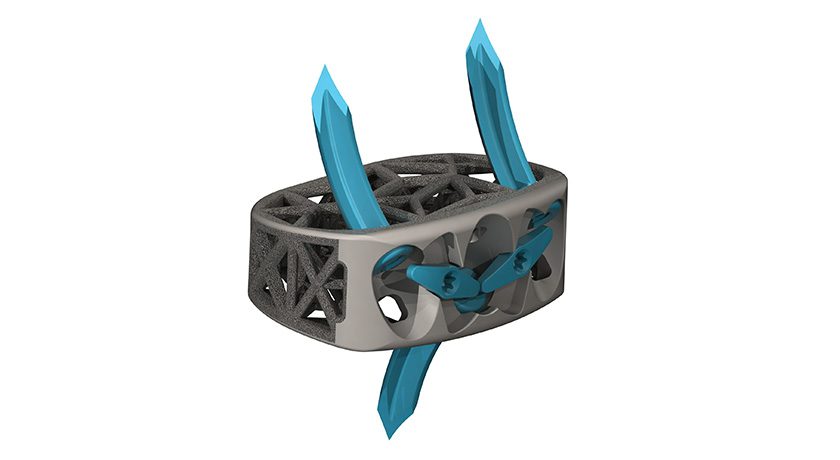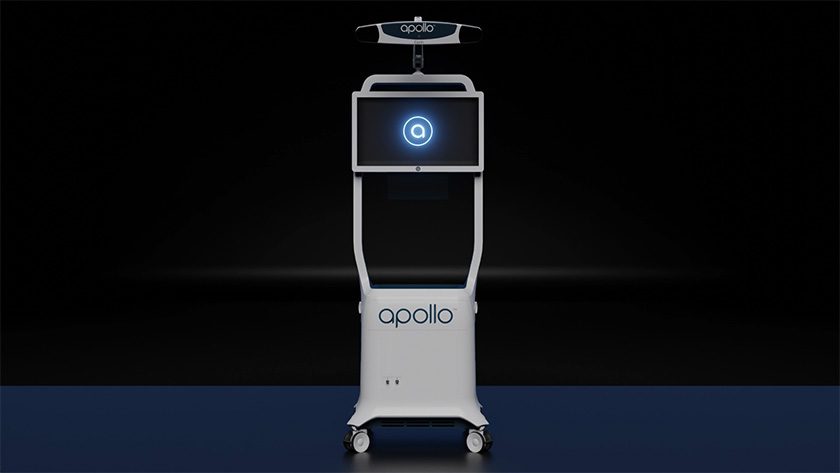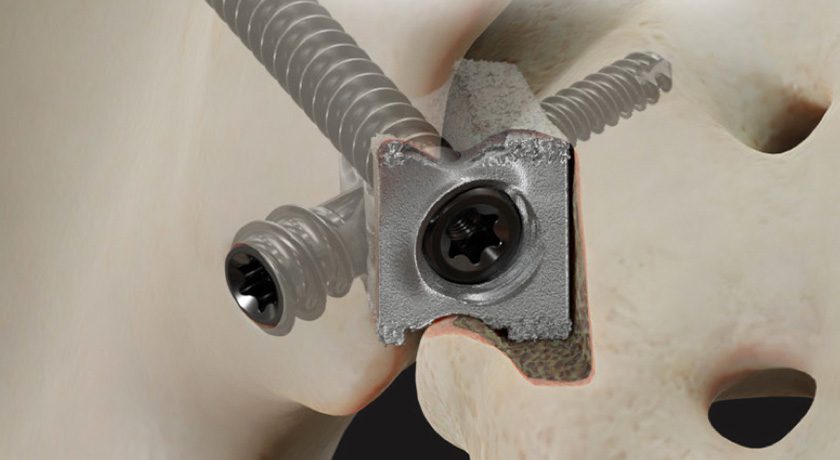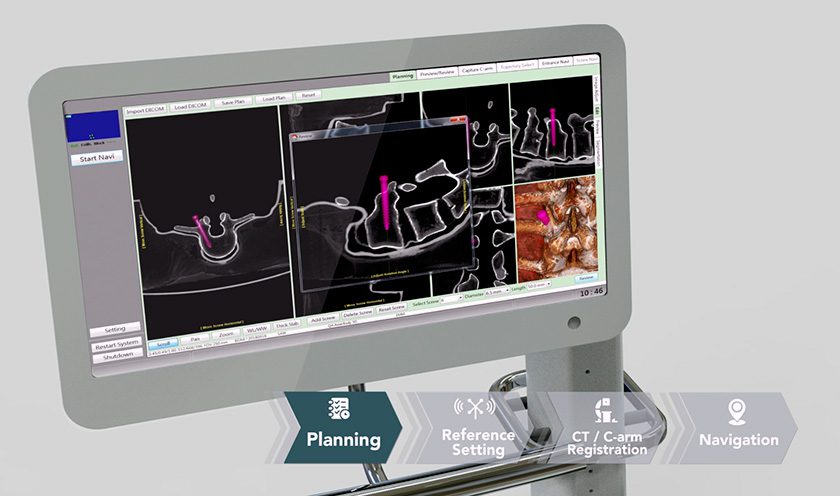





Surgeons and device companies face a similar challenge with reimbursem


That was the message shared by Eric Muehlbauer, Executive Director and CEO of the North American Spine Society (NASS) and an ORTHOWORLD Member, as we spoke with him about the state of the spine industry in preparation for next month’s Annual Meeting, October 26 through 29.
Proactive reimbursement measures are a prime initiative for the society, and are addressed through its coverage policy recommendations, which are seen by NASS as a powerful tool for both surgeons and device companies.
“Members and industry benefit greatly from this [living document],” Muehlbauer says. “In this hierarchy of developing evidenced-based comments there are clinical guidelines, which are the highest form of evidence; then there are things like appropriate use criteria documents. The coverage recommendation documents are evidence-informed. We know that insurance companies will use whatever they can to formulate a policy, so we try to develop reasonable policies that do all of that homework for them, synthesize the current literature, etc.”
NASS has produced 25 coverage recommendations addressing treatments and procedures such as cervical and lumbar disc replacement, cervical and lumbar fusion, percutaneous sacroiliac joint fusion and certain discectomies and injections. More than 30 recommendations remain in the works, including one for facet joints, which is under final review by the initiative’s multi-specialty committee.
Coverage recommendations are influenced by systematic reviews, meta-analyses, clinical guidelines and randomized controlled trials found in literature searches on sites like PubMed, EMBASE, Web of Science and Cochrane. A measure of the initiative’s success is the fact that insurance companies often cite these recommendations in policy revisions and sometimes adopt them verbatim, Muehlbauer says.
Still, work needs to be done. In a November 2015 surgeon survey conducted by ORTHOWORLD in conjunction with NASS, the nearly 40 surgeon respondents ranked reimbursement and a lack of outcomes/data evidence as their greatest headwinds.
Assuredly, the reimbursement struggle is not new to you. For all of the years that it has been a topic of conversation, though, Muehlbauer says that industry mindsets have not sufficiently shifted from reactive to proactive.
We asked Muehlbauer for one single piece of advice.
“Focus on proving value,” he urged.
All too often, from Muehlbauer’s perspective, companies neglect to develop a reimbursement strategy alongside their device approval strategy, which is especially critical for new technologies. FDA might want you to prove safety and effectiveness, but insurance companies work by the standard of reasonable and necessary.
While industry is just one figure in the equation, device companies can and must play a role in evidence generation to positively impact reimbursement, not only for themselves, but for their customers. One way to do that is to be published in the literature.
Take for instance two of the coverage recommendations mentioned above: cervical artificial disc replacement and percutaneous sacroiliac joint fusion. LDR (recently acquired by Zimmer Biomet) and SI-BONE have invested heavily in clinical and economic data, surgeon reimbursement resources and marketing of information to expand reimbursement of their devices and position them for surgeon adoption. That, in ORTHOWORLD’s estimates, partially correlated to +20% revenue growth for both companies from 2014 to 2015.
In highlighting those two companies, it can’t be forgotten that the coverage pushback is not solely associated with novel devices. In the April issue of ORTHOKNOW, reimbursement experts warned that payors want higher levels of scientific evidence that support long-term outcomes for routine 510(k)s. Device companies should not be surprised if they’re asked to conduct two-year follow-up studies.
If you imagine the interconnectivity of the players in the supply chain, from surgeon to device company to supplier, all of which will be represented at NASS, each segment plays a role in assisting those in the next link. Yes, studies take time, personnel and money to produce. But device companies’ abilities to collect and disseminate these necessary tools won’t only impact their leverage with payors, but can also ultimately assist their surgeons’ purchasing decisions.
And, I can’t help but be reminded of a BONEZONE® article we published about five years ago, in which author Kelli Hallas asserts, “Bottom line is this…no matter how unique or innovative a product, no matter how fine-tuned your internal processes, no matter how great the initial demand, in order to be successful in today’s marketplace, everybody needs to be paid.”
Muehlbauer predicts that reimbursement challenges will persist. This is in part why NASS is not only boosting the number of coverage policy recommendations, but increasing its resources to make the recommendations available to payors.
Meet Eric Muehlbauer
Eric Muehlbauer has served as NASS’ Executive Director and CEO since September 1994. He is a Certified Associate Executive with a Bachelor of Arts from Knox College, a Master’s of Jurisprudence in Health Law & Policy from Loyola University Chicago Law School and has completed additional coursework on Strategic Perspectives in Nonprofit Management at the Harvard University School of Business. He is a Member of the American Society of Law, Medicine and Ethics, the American Association of Medical Society Executives and ORTHOWORLD.
Carolyn LaWell is ORTHOWORLD’s Chief Content Officer. She can be reached by email.
The NASS coverage recommendations eBook is available from spine.org.
Surgeons and device companies face a similar challenge with reimbursement: it continues to be one of the greater barriers for technology adoption today due to payor pushback. With no foreseeable easement expected to come from private or public payors, surgeons and device companies must embrace a proactive approach.
That was the...
Surgeons and device companies face a similar challenge with reimbursem


That was the message shared by Eric Muehlbauer, Executive Director and CEO of the North American Spine Society (NASS) and an ORTHOWORLD Member, as we spoke with him about the state of the spine industry in preparation for next month’s Annual Meeting, October 26 through 29.
Proactive reimbursement measures are a prime initiative for the society, and are addressed through its coverage policy recommendations, which are seen by NASS as a powerful tool for both surgeons and device companies.
“Members and industry benefit greatly from this [living document],” Muehlbauer says. “In this hierarchy of developing evidenced-based comments there are clinical guidelines, which are the highest form of evidence; then there are things like appropriate use criteria documents. The coverage recommendation documents are evidence-informed. We know that insurance companies will use whatever they can to formulate a policy, so we try to develop reasonable policies that do all of that homework for them, synthesize the current literature, etc.”
NASS has produced 25 coverage recommendations addressing treatments and procedures such as cervical and lumbar disc replacement, cervical and lumbar fusion, percutaneous sacroiliac joint fusion and certain discectomies and injections. More than 30 recommendations remain in the works, including one for facet joints, which is under final review by the initiative’s multi-specialty committee.
Coverage recommendations are influenced by systematic reviews, meta-analyses, clinical guidelines and randomized controlled trials found in literature searches on sites like PubMed, EMBASE, Web of Science and Cochrane. A measure of the initiative’s success is the fact that insurance companies often cite these recommendations in policy revisions and sometimes adopt them verbatim, Muehlbauer says.
Still, work needs to be done. In a November 2015 surgeon survey conducted by ORTHOWORLD in conjunction with NASS, the nearly 40 surgeon respondents ranked reimbursement and a lack of outcomes/data evidence as their greatest headwinds.
Assuredly, the reimbursement struggle is not new to you. For all of the years that it has been a topic of conversation, though, Muehlbauer says that industry mindsets have not sufficiently shifted from reactive to proactive.
We asked Muehlbauer for one single piece of advice.
“Focus on proving value,” he urged.
All too often, from Muehlbauer’s perspective, companies neglect to develop a reimbursement strategy alongside their device approval strategy, which is especially critical for new technologies. FDA might want you to prove safety and effectiveness, but insurance companies work by the standard of reasonable and necessary.
While industry is just one figure in the equation, device companies can and must play a role in evidence generation to positively impact reimbursement, not only for themselves, but for their customers. One way to do that is to be published in the literature.
Take for instance two of the coverage recommendations mentioned above: cervical artificial disc replacement and percutaneous sacroiliac joint fusion. LDR (recently acquired by Zimmer Biomet) and SI-BONE have invested heavily in clinical and economic data, surgeon reimbursement resources and marketing of information to expand reimbursement of their devices and position them for surgeon adoption. That, in ORTHOWORLD’s estimates, partially correlated to +20% revenue growth for both companies from 2014 to 2015.
In highlighting those two companies, it can’t be forgotten that the coverage pushback is not solely associated with novel devices. In the April issue of ORTHOKNOW, reimbursement experts warned that payors want higher levels of scientific evidence that support long-term outcomes for routine 510(k)s. Device companies should not be surprised if they’re asked to conduct two-year follow-up studies.
If you imagine the interconnectivity of the players in the supply chain, from surgeon to device company to supplier, all of which will be represented at NASS, each segment plays a role in assisting those in the next link. Yes, studies take time, personnel and money to produce. But device companies’ abilities to collect and disseminate these necessary tools won’t only impact their leverage with payors, but can also ultimately assist their surgeons’ purchasing decisions.
And, I can’t help but be reminded of a BONEZONE® article we published about five years ago, in which author Kelli Hallas asserts, “Bottom line is this…no matter how unique or innovative a product, no matter how fine-tuned your internal processes, no matter how great the initial demand, in order to be successful in today’s marketplace, everybody needs to be paid.”
Muehlbauer predicts that reimbursement challenges will persist. This is in part why NASS is not only boosting the number of coverage policy recommendations, but increasing its resources to make the recommendations available to payors.
Meet Eric Muehlbauer
Eric Muehlbauer has served as NASS’ Executive Director and CEO since September 1994. He is a Certified Associate Executive with a Bachelor of Arts from Knox College, a Master’s of Jurisprudence in Health Law & Policy from Loyola University Chicago Law School and has completed additional coursework on Strategic Perspectives in Nonprofit Management at the Harvard University School of Business. He is a Member of the American Society of Law, Medicine and Ethics, the American Association of Medical Society Executives and ORTHOWORLD.
Carolyn LaWell is ORTHOWORLD’s Chief Content Officer. She can be reached by email.
The NASS coverage recommendations eBook is available from spine.org.


You are out of free articles for this month
Subscribe as a Guest for $0 and unlock a total of 5 articles per month.
You are out of five articles for this month
Subscribe as an Executive Member for access to unlimited articles, THE ORTHOPAEDIC INDUSTRY ANNUAL REPORT and more.
CL
Carolyn LaWell is ORTHOWORLD's Chief Content Officer. She joined ORTHOWORLD in 2012 to oversee its editorial and industry education. She previously served in editor roles at B2B magazines and newspapers.







